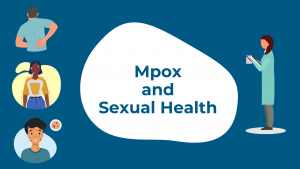By Eli Coleman, PhD
In the past decade, there have been significant changes in the discourse of public health regarding sexual health. Recently, there has been a significant leap in the recognition of sexual health as a central component of overall health. But this has been a long journey over the last century. Our understanding of sexual health has moved slowly from a purely disease perspective to a broader perspective of what it means to be sexual healthy.
The most notable advance of the construct occurred when the World Health Organization (WHO) convened meetings and produced a technical document in 1975 which made the first attempt at defining sexual health. The definition read as follows:
Sexual health is the integration of the somatic, emotional, intellectual and social aspects of sexual being, in ways that are positively enriching and that enhance personality, communication and love.
In the next paragraph, the authors wrote, “Fundamental to this concept are the right to sexual information and the right to pleasure.” The document went on to cite Mace, Bannerman, and Burton, who described sexual health as containing three basic elements: (1) the capacity to enjoy and control sexual and reproductive behavior in accordance with a social and personal ethic; (2) a freedom from fear, shame, guilt, false beliefs, and other psychological factors inhibiting sexual response and impairing sexual relationships; and (3) freedom from organic disorders, diseases, and deficiencies that interfere with sexual and reproductive functions. The WHO document concluded, “Thus the notion of sexual health implies a positive approach to human sexuality, and the purpose of sexual health care should be the enhancement of life and personal relationships and not merely counseling and care related to procreation or sexually transmitted diseases.”
The emergence of the AIDS pandemic in the 1980s put pressure on health ministries to develop new approaches to sexual health promotion. The combined burden of the HIV/AIDS pandemic, increases in unintended pregnancies, greater awareness of sexual violence, and greater publicity about sexual dysfunctions and disorders highlighted the urgent need for enhanced sexuality education and a much more concerted approach to addressing sexuality problems. A new public health mandate began to emerge to address these sexual health issues in a comprehensive manner. At this juncture a significant step occurred where the term “sexual health” became incorporated into the discourse on a public health level.
As conversations continued, new definitions were developed. Most significant were the definitions that were created by the Pan American Health Organization/Regional Office of the World Health Organization (PAHO) and by the U.S. Surgeon General, both in 2000. Two years later, WHO embarked on a revision of its definition that was by then almost three decades old.
Probably the most controversial issue that has daunted the construction of these definitions is pleasure. The right to pleasure as essential to attainment of sexual health was acknowledged in the 1975 document, but not included in the definition itself, nor was it included in the PAHO definition. Interestingly, the concept of pleasure was included in the WHO 2002 working definition. In some ways it is a rather revolutionary concept that government policies and public health approaches should be designed not just to avoid problems of illness and infertility, but to promote pleasure as an essential ingredient of well-being.
To have sexual rights that included pleasure articulated by the WHO was a significant step in the history of public health, particularly because the rights imply individual and societal responsibility. That this step can be a difficult one within the public health world was certainly illustrated in the attempt by the Centers for Disease Control and Prevention (CDC) to develop its own definition in 2010. The definition constructed embodied many of the concepts in previous definitions but avoided the discussion of sexual rights and did not include the concept of pleasure.
In addition to these, the Trojan™ Sexual Health Advisory Council and more recently the American Sexual Health Association developed more consumer-friendly definitions that embodied the basic concepts, including rights and pleasure, but made them more accessible to the public.
The public health imperative of developing a strategic and comprehensive approach to sexual health promotion has been articulated over and over again in the last century. But recently something fundamental has shifted. A new era has begun. Sexual health has been recognized as a key strategy in promoting overall health and well-being. In 2008 alone, several international documents were produced which assert the centrality of sexual health in public health promotion at the highest levels of public health strategies. The responsibility of the state has been made clear: to respond strategically and comprehensively to the large number of sexual health issues.
In many of the sexual health documents, the recommendations for promoting sexual health are also highly consistent and include the following:
- Create better climates for discussion of sexuality;
- Increase access to information and education about sexuality;
- Develop prevention strategies to include community-based intervention;
- Enhance access to care for sexual concerns; and
- Increase research in human sexuality and evaluation of programs designed to promote sexual health
As governments and public health experts struggle with the complexities of the sexual problems that face their nations, they will need to continue to develop strategies to promote sexual health and keep in mind that sexual health has been recognized as a basic human right for all.


 Eli Coleman, PhD, is the academic chair in sexual health, professor, and director of the Program in Human Sexuality, Department of Family Medicine and Community Health, at the University of Minnesota Medical School in Minneapolis. He is the author of numerous articles and books on sexual health, and the founding editor of both the International Journal of Transgenderism and the International Journal of Sexual Health.
Eli Coleman, PhD, is the academic chair in sexual health, professor, and director of the Program in Human Sexuality, Department of Family Medicine and Community Health, at the University of Minnesota Medical School in Minneapolis. He is the author of numerous articles and books on sexual health, and the founding editor of both the International Journal of Transgenderism and the International Journal of Sexual Health.



